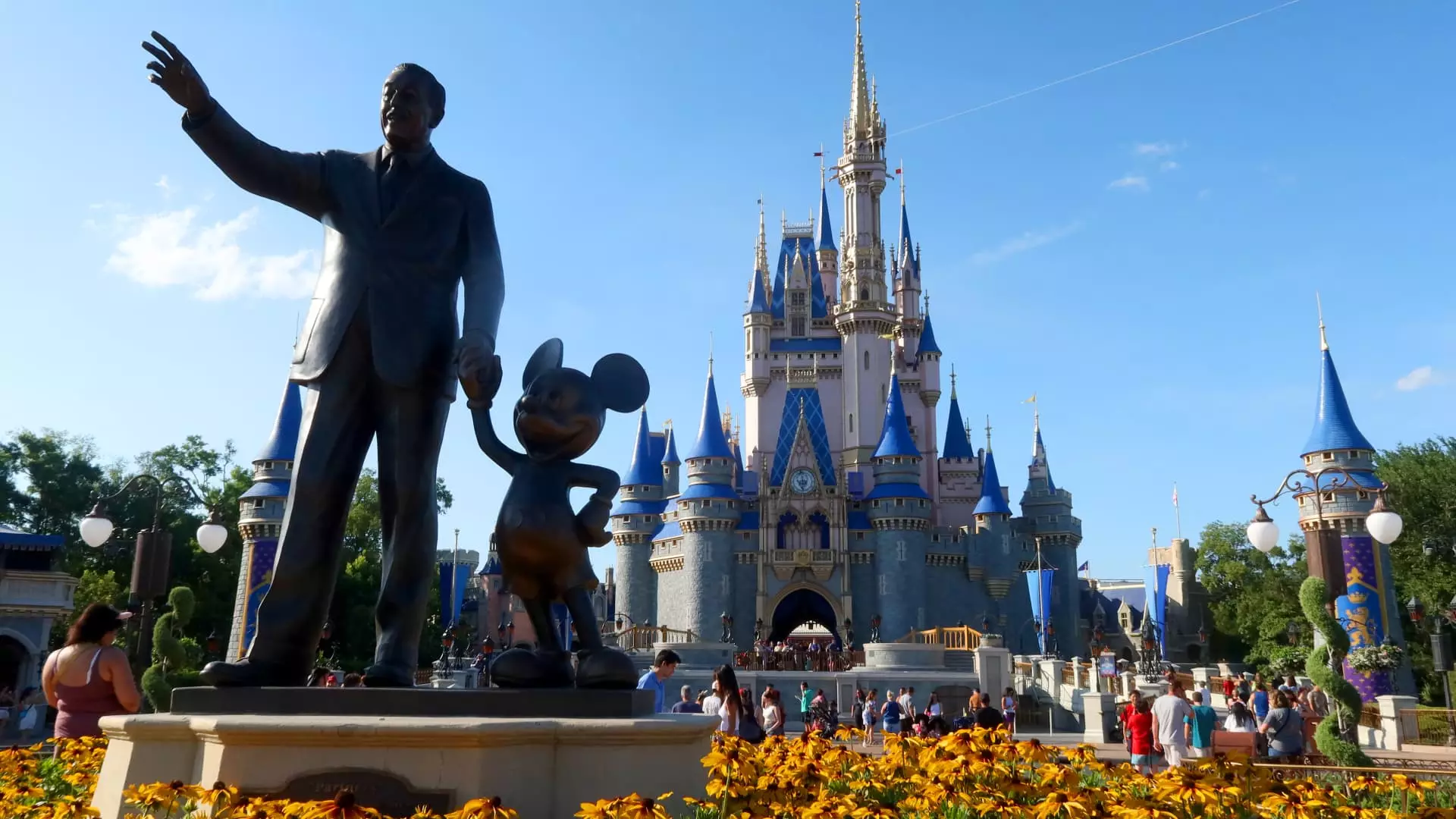On Thursday, the entertainment giant Disney is slated to unveil its fiscal fourth-quarter earnings, a momentous occasion that is likely to captivate analysts and investors alike. As the company prepares to disclose key financial metrics, Wall Street is particularly keen on the health of its streaming services and theme park operations. Expectations are set high, with analysts forecasting that Disney will report earnings of $1.10 per share and a revenue of approximately $22.45 billion. These figures reflect the company’s attempt to stabilize its performance in the face of intense competition and evolving consumer behavior.
A pivotal focus for stakeholders will undoubtedly be on Disney’s streaming business, which encompasses popular platforms like Disney+, Hulu, and ESPN+. Recent trends indicate a significant shift as Disney’s streaming segment has reportedly turned a profit for the first time in the previous quarter. However, this success is juxtaposed with the remarkable subscriber growth that competitors are experiencing. For instance, Warner Bros. Discovery’s Max boasts an addition of 7.2 million subscribers, while Netflix and Comcast’s Peacock reported gains of 5 million and 3 million, respectively. In light of these figures, the pressure is mounting on Disney to demonstrate its ability to keep pace in a landscape characterized by fierce rivalry.
Investor sentiment is increasingly focused on the balance between subscriber growth and profitability in the streaming arena. Mike Proulx, a research director at Forrester, emphasizes this dichotomy, noting that while Disney may enjoy a temporary boost due to its password-sharing crackdowns, this uptick will likely be fleeting. The industry’s current trajectory seems to lean toward establishing more profit-driven initiatives, such as introducing ad-supported content and implementing strict measures against password sharing, reflecting a broader trend of monetizing digital content in a competitive environment.
Shifting gears to Disney’s theme park sector, the company faces its own set of challenges. Recent reports signal a slowdown in consumer demand, particularly within U.S. parks, highlighting a concerning stagnation in attendance figures. Such trends necessitate an examination of Disney’s strategies in engaging its core audience and reigniting interest in its theme park offerings. As families weigh the costs of vacations and leisure activities, Disney must adapt to ensure a compelling value proposition that draws consumers back to its parks.
Leadership Transition and Future Directions
Moreover, amidst these financial concerns, the conversation surrounding leadership is poised to be just as critical. The company plans to appoint a successor for current CEO Bob Iger in early 2026, with the transition led by James Gorman, the incoming chairman of the board. Investors are eager to glean insights into the timeline and criteria for this leadership change as it could significantly influence Disney’s strategic direction moving forward.
As Thursday’s earnings report draws closer, all eyes will be on Disney to see how it navigates the complexities of profitability, market competitiveness, and organizational transitions. The outcomes could shape the discourse around the company for months, if not years, to come.

